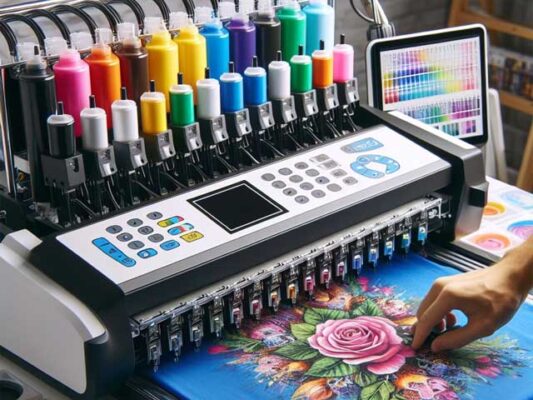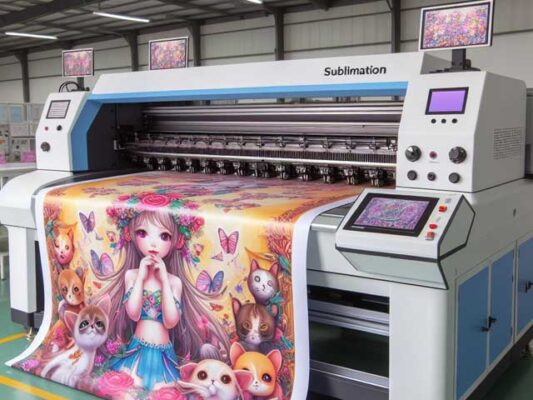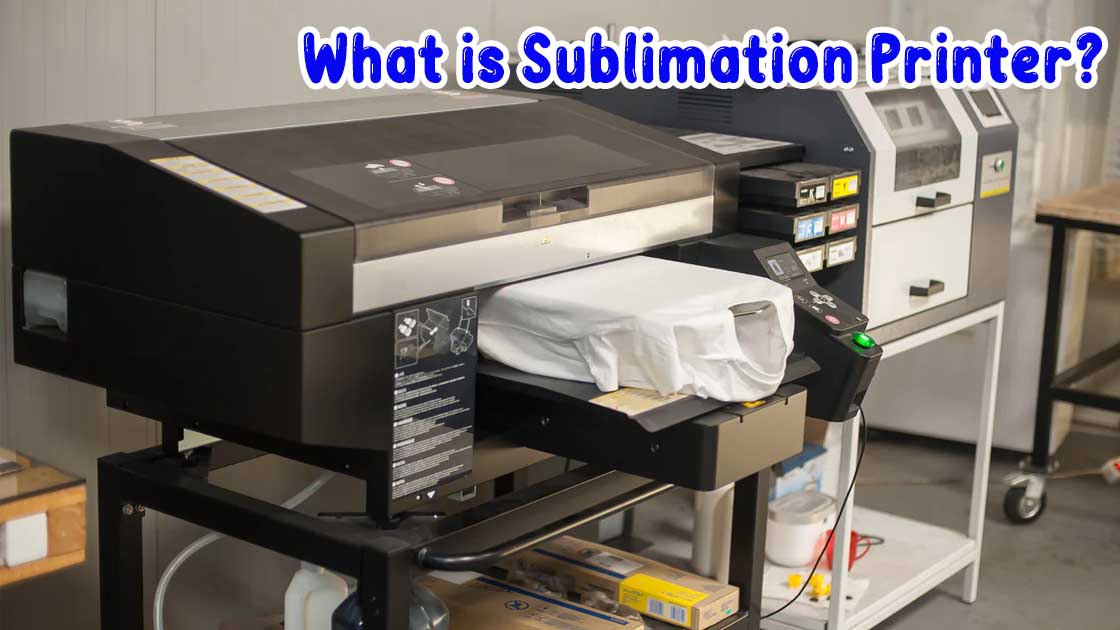Sublimation printing is a digital printing process that uses heat and pressure to transfer dye onto different materials. It is a popular choice for printing on fabrics, plastic, metal, ceramic, as well as glass. In this article, we will explore the basics of sublimation printing, including how it works and the advantages it offers compared to other printing methods. We will also discuss the materials it can be used on and answer other common questions.
What is sublimation printing and how does it work?
Sublimation printing is a digital printing process that uses heat and pressure to transfer dye onto different materials. Here’s the full process:
- You print a design onto special transfer paper using sublimation inks.
- Then, you place the paper onto a product and heat it with a heat press.
- The heat turns the inks into a gas, and the material absorbs them.
- As a result, you get a permanent, vibrant print that won’t fade or crack over time.
Sublimation printing pros

What’s most exciting about sublimation printing is the ability to produce vibrant and detailed prints. Thanks to the high temperatures used in the process, the lines appear very sharp and the colors aren’t faded. An important thing to note about dye sublimation is that the ink isn’t just applied on top of the material. Instead, it’s absorbed right into the material, becoming an integral part of it. That’s why a sublimation print won’t fade or wash off, lasting much longer than a screen print or a DTG print.
Another advantage of sublimation printing is its quick turnaround time. Because the printing process is digital and doesn’t require creating a physical screen or plate, sublimation printers can quickly produce high-quality prints and require less manual labor than, for example, screen printing.
Sublimation printing cons
One of the main disadvantages of sublimation printing is that it can only be used on materials that are compatible with the sublimation process. This means that the material must be able to withstand high temperatures and have a special coating that can absorb the dye.

What can you sublimate on?
Sublimation printing can be used on a variety of materials, including:
- Apparel
- Accessories
- Mugs
- Home decor
Sublimation compared to other printing processes
Sublimation printing has several advantages over other printing processes, such as screen printing and direct-to-garment (DTG) printing. Here’s how they compare:
- Sublimation vs. Screen printing: Screen printing is a popular printing method that involves applying ink to a stencil and then pressing it onto the material. While screen printing can produce high-quality prints, it’s not as durable as sublimation printing. Screen prints can crack and fade over time, especially after multiple washes. Sublimation prints, on the other hand, are much more durable and long-lasting.
- Sublimation vs. DTG: DTG printing is another digital printing method that involves printing directly onto the material using a special printer. While DTG printing can produce high-quality prints, it’s not as vibrant or long-lasting as sublimation printing. DTG prints can also fade and crack over time, especially after multiple washes.
How to prepare a design file for sublimation printing

To prepare a design file for sublimation printing, you need to follow a few guidelines:
- Use a high-resolution image: The image should be at least 300 DPI to ensure that it prints clearly and sharply.
- Use the right color mode: The image should be in CMYK color mode, which is the color mode used by sublimation printers.
- Use the right file format: The image should be in PNG format with a transparent background.
- Size the image correctly: The image should be sized to the dimensions of the product you’re printing on.
Sublimation FAQs
Here are some common questions about sublimation printing:
- How long does a sublimation print last?
- A sublimation print can last for years without fading or cracking, as long as it’s cared for properly.
- What materials can you sublimate on?
- Sublimation printing can be used on a variety of materials, including fabrics, plastic, metal, ceramic, and glass.
- How much does sublimation printing cost?
- The cost of sublimation printing depends on the size of the print, the number of colors used, and the material being printed on.
Conclusion
Sublimation printing is a digital printing process that uses heat and pressure to transfer dye onto different materials. It is a popular choice for printing on fabrics, plastic, metal, ceramic, and glass. Sublimation printing offers several advantages over other printing processes, such as screen printing and direct-to-garment (DTG) printing, including the ability to produce vibrant and detailed prints and a quick turnaround time. However, it also has some disadvantages, such as being limited to materials that are compatible with the sublimation process and not being suitable for printing on dark-colored materials. I hope this article has provided you with useful information about sublimation printing and its applications.

